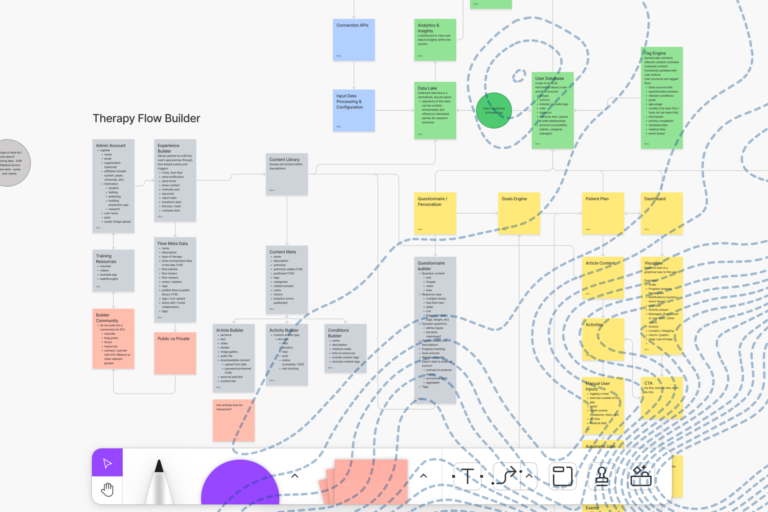Growth-focused leaders in 2021 know that embarking on a business transformation initiative is a bold venture. They also know that investing in digital tech is well worth the risk. The problem is that 70% of digital transformation initiatives fail to meet their objectives. What exactly are those companies doing wrong?
There are a million different ways a transformation can go awry, and many of those failures stem from a misstep at the initiative’s conception. Without a proper planning phase, any digital transformation can fall flat regardless of resources and talent.
That doesn’t mean that companies should avoid adopting new technology. In fact, not taking the plunge on a much-needed transformation is the biggest gamble of them all. With so many companies investing in digital technologies ($1.7 trillion in 2019), failing to adopt new tech could leave your company without a business advantage and falling behind competitors.
There are no perfect equations for a successful transformation. Fortunately, organizations can take many different paths to strengthen their initiative. The Arcweb Technologies team has led product and software development for over 200 projects, and we know that transformation initiatives can succeed: they just need a strong go-to-market strategy, top-notch execution, and ongoing quality assurance.
Here are the most common reasons why digital transformations fail and how you can avoid making the same mistakes.
Common Digital Transformation Mistakes
Only focusing on technological change
Digital transformations are more about the people than the tech stack. It’s an organizational and cultural shift. While technology is a key element, your business stakeholders will be the glue holding the transformation initiative together. Transformation leaders should consider employees, customers, partners, and any end-user that might be a part of the new technical processes.
Some senior leaders may believe that transformation initiatives can occur in a vacuum or that you can transform one segment of the business without disrupting the others. Nobody should make that assumption without examining the organizational structure of their business. Tony Saldanhia’s widely referenced book “Why Digital Transformations Fail” points out that siloed innovation can stunt your transformation initiative, limiting advancement to just one small part of the business and hindering complete adoption. Focusing only on the back-end without considering how you will drive adoption can also stifle customer innovation. How can your technology thrive if it wasn’t designed with your end-user in mind?
Not engaging your entire organization
Digital transformation initiatives are an organization-wide commitment that requires multi-party participation from beginning to end. Even when working with an outside transformation partner like Arcweb, you need to make sure your senior leaders are immersed in and contributing to the transformation process so that the needs of their different business units are met—otherwise, the end of the transformation initiative likely won’t meet the on-the-ground needs of your business. Executive buy-in is also critical, as CEOs are often the most powerful endorsers for organizational change.
When selecting outside experts to assist your transformation, find an agency that will integrate with your team efficiently. A smart third-party transformation expert will work side-by-side with the company leaders to ensure the transformation strategy will complement the business and deliver the results you need.
Taking digital adoption for granted
The technology you choose may seem like the obvious choice to you, but end-users may have a different perspective. You cannot simply digitize a process and expect that it will land well with your target audience, whether that means outside customers or internal stakeholders and users. Many companies have invested significant time and resources into developing new tools, only to find that their customers and internal users prefer the old ones: often, because they were built with an eye on their needs that the new product or tool lacked.
Choosing the right technology is only half of the battle. New systems must integrate well with your existing processes and make themselves available to the end-users in a way that will resonate with them, rather than disrupt critical work and features. To get the results you’re looking for, you need a strong go-to-market strategy that will help gain stakeholder support and develop customer buy-in.
Failing to define the goals of the initiative
Transformation leaders must establish the initiative’s goals for the organization. Setting key performance indicators and communicating those metrics to the team will provide guidance and establish a clear vision. If you cannot outline the clear purpose of your transformation, you could end up spending millions on a fancy digital spectacle rather than an authentic business transformation that consistently demonstrates value.
Miscalculating the Budget
Underestimating or overestimating the transformation budget could severely damage your business transformation strategy. Every transformation initiative is different, and that means you need to prepare for a project that suits the unique needs of your organization. Maybe it can be smaller in scope and pursue an aggressive timeline—or maybe your transformation will take multiple years, and have to proceed through several phases before all your goals are met.
Setting a budget will also affect which tech is leveraged, where you find your talent and influence ROI expectations. Consider all of the factors that will influence your digital transformation budget and be flexible to account for unforeseen circumstances.
Hiring the wrong talent
Don’t make the mistake of leveraging the wrong talent in-house or hiring vendors that don’t actually possess the specific skills you need. If it’s time for a major customer experience makeover, you’ll want to make sure you incorporate UI/UX designers to create an experience that lives up to what customers and internal stakeholders have come to expect. If you’re planning to utilize existing technology that will need to interact with core part of your business technology, make sure to hire an integration expert and find a partner who can inform your software architecture decisions. Maybe you need a cross-functional team with a variety of tech knowledge and direct experience in your industry. Whatever the case, gather the right team to avoid a mediocre business transformation.
If you aren’t sure what type of talent is required, just ask. Getting an assessment of your company’s needs is a great way to determine the exact scope of tech expertise you’ll need.
Building a digital product?
Beginning Your Transformation Initiative
Even with a well-thought-out business transformation strategy that avoids these common mistakes, you will likely have to adjust along the way. The key to addressing missteps during your transformation is to institute practices that will help you determine when and where you need to redirect your efforts.
One method for identifying if a product or service will be marketable to your audience is by using rapid prototyping methodologies. You can accomplish this by creating an MVP or a scaled-down, yet comprehensive, version of your technology that can replicate the customer experience. Present it to an exemplary group of end-users and evaluate their reaction to the model.
Arcweb partnered with a retail tech company that wanted to create a turnkey solution that helped retailers capture better leads and increase revenue. The Arcweb team determined the product feasibility and overall marketability of their concept by building and testing 5 MVPs within 2 months. Using lean methodologies, the team was able to use the quantitative results to identify the best product for their customers.
We knew that outsourcing our MVP design and development work was the right move—but it had to be collaborative; it had to be more than just your standard short-term client-vendor relationship. When we decided to bring Arcweb Technologies on board, we knew that they were as committed and passionate about our company as we are. It was clear to us that the team we were bringing on to handle such a critical piece of our offering was the right one—and that remains to be the case.
Scott Bohrer, Co-Founder & CEO, Thrive Commerce
Acquiring data and information from your intended audience before strategizing is another way of reducing the chance of failure. If you can gather representative data about your customers—or, better yet, survey your audience—you can use their perspectives to guide your business strategy. The research you conduct might also indicate what your ROI and results will look like over time. Predictive figures can inform your budgetary decisions and scale your transformation appropriately.
Will Digital Transformation Help Your Business?
Effective digital transformations are growth-focused. If you’re a senior leader looking to gain a competitive advantage in their industry and/or realize business growth, you will almost certainly need to undertake a digital transformation eventually. If you have already decided that a transformation is the next step for your organization, avoid these common mistakes and take actionable steps for a thoughtful and ultimately, profitable business transformation.
While some may hesitate to take the risk needed to elevate their business, you can feel confident taking the digital transformation path with a thoughtful business strategy and the right team.
If you have questions or want to learn more about what this business initiative might look like within your organization, contact our transformation experts.

 We knew that outsourcing our MVP design and development work was the right move—but it had to be collaborative; it had to be more than just your standard short-term client-vendor relationship. When we decided to bring Arcweb Technologies on board, we knew that they were as committed and passionate about our company as we are. It was clear to us that the team we were bringing on to handle such a critical piece of our offering was the right one—and that remains to be the case.
We knew that outsourcing our MVP design and development work was the right move—but it had to be collaborative; it had to be more than just your standard short-term client-vendor relationship. When we decided to bring Arcweb Technologies on board, we knew that they were as committed and passionate about our company as we are. It was clear to us that the team we were bringing on to handle such a critical piece of our offering was the right one—and that remains to be the case.

